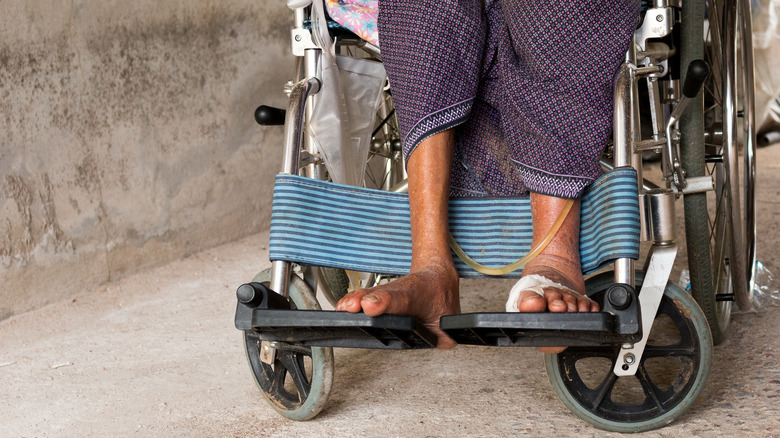How Does A Catheter Work?
A urinary catheter is a tube that can help drain urine from the bladder when you are unable to urinate properly on your own, says MedlinePlus. Among the reasons your doctor might recommend one would be if you are unable to control when you urinate or can't empty your bladder as needed. It might also be used to deliver medications directly to the bladder, according to the National Health Service (NHS).
Healthline explains that it is important for the bladder to be emptied in a timely manner. If it isn't, urine builds up, causing pressure on the kidneys. This can cause kidney failure and damage.
According to WebMD, the most common problem a person might experience with a catheter is that it can introduce germs into the bladder or urinary tract where they can multiply, causing an infection. Sometimes people might have leaks as well if the catheter becomes blocked by clotted blood or a build up of minerals from the urine, says Aeroflow Urology. Some people will also have bladder spasms that can push their catheter out. Less common issues that people might experience include: pain, bladder stones, bloody urine, kidney damage, or damage to the urethra.
The 3 main types of catheters and how they work
There are three main types of catheters, according to Healthline: indwelling, external, and short-term.
An indwelling (Foley) catheter is a catheter that is placed inside the bladder. It may be inserted through the urethra (the body's natural tube for urination) or through a small opening in the patient's abdomen (suprapubic catheter). A tiny balloon on the end of the catheter holds it in place. These may be used for a short or long period of time. When they are no longer needed, the balloon is deflated so they can be removed. Healthtalk.org states that this type of catheter can be attached to a collection bag or catheter valve. Urine then either runs into the collection bag for later disposal or the valve can opened to drain the bladder.
An external (condom) catheter is used outside the body. As the name implies, this type of catheter ultilizes what is similar to a condom to cover the penis. A tube at the end of the condom carries urine to a drainage bag. A condom catheter is usually changed every day.
Finally, short-term (intermittent) catheters are only used to empty the bladder and are then removed. This may be done through the urethra or through a hole in the abdomen made specifically for this purpose.


